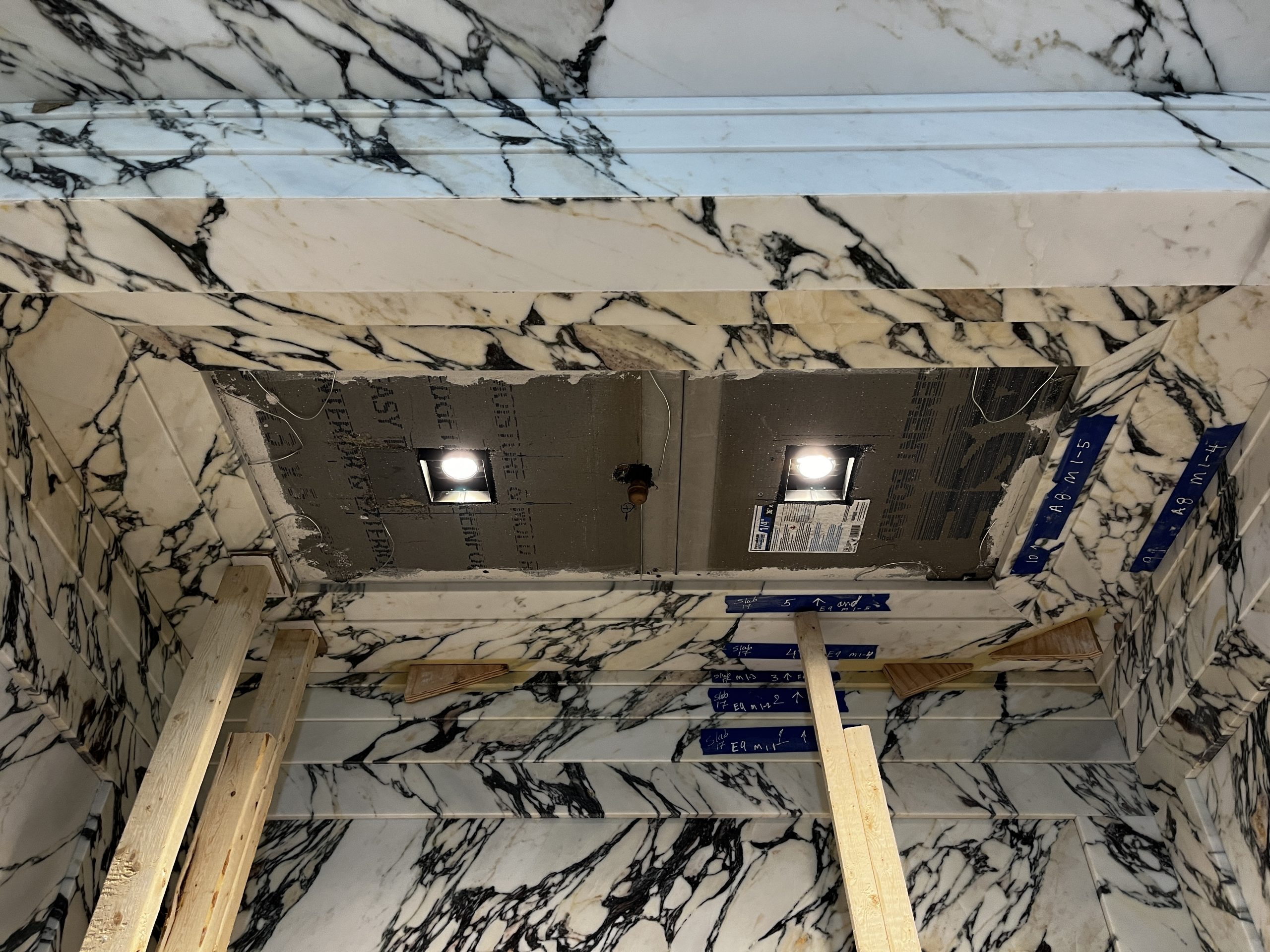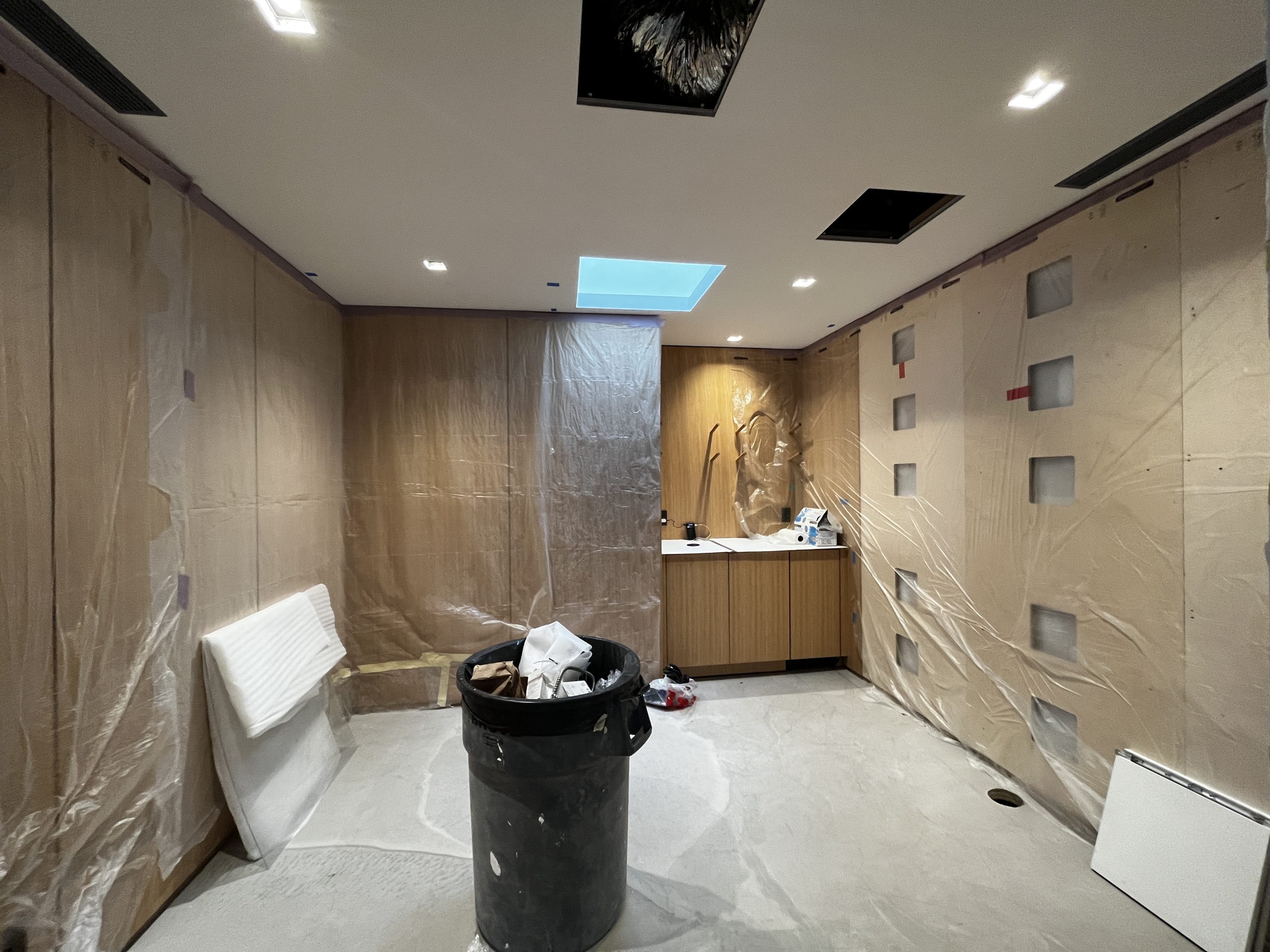A construction allowance is a specific amount of money set aside in a construction contract for items or materials that have not yet been selected or fully specified at the time of signing the contract and buying out the project. Allowances allow flexibility for the owner or client to choose these items later on, such as fixtures, finishes, or appliances, in the range of an estimated budget.
For example, in a luxury home renovation, there might be a construction allowance for the stone selected for bathroom finishes. The owner may want extra time to visit, select, and secure the specific stone slab and veining they’d like in their bathroom. The contractor, with Architect and Owner’s Representative review, would agree to an allowance budget estimated for the stone slabs likely selected.
If the homeowner later chooses stone slabs that exceed the allowance, they would be responsible for paying the difference in a Change Order. Conversely, if they select a stone slab under the allowance, they will receive a credit in the form of a change order.
The Purpose of Allowances
Allowances are used to account for items that are necessary for a project but haven’t been finalized in selection, quantity, or cost. These could be materials, fixtures, or even labor for specialized tasks. By including allowances in the contract, the contractor, design team and the client acknowledge that certain aspects of the project are yet to be determined, while still maintaining a framework for the overall budget.
Allowances allow construction work to proceed, while the client and design team spend the extra time they need to make specific selections for the project. They enable the project to move forward without delaying the entire process while waiting for every detail to be finalized.
In financial terms, Allowances help manage the overall budget – allocating funds for items that are necessary but not yet finalized. They distribute the risk between the contractor and the client for items that can’t be accurately priced at the outset of the project. However, I will caution that the risk distribution of allowances is also their greatest risk – and I personally avoid allowances whenever possible.
Types of Allowances
There are two main types of allowances in construction:
- Material Allowances: These cover the cost of materials that haven’t been selected at the time of budget (lump sum) sign off. For example, an allowance might be set for a certain quantity of stone based on the client’s expected selection. This allows the client to choose the specific slab type and perhaps quality of stone later in the project.
- Labor Allowances: These account for work that can’t be accurately estimated at the beginning of the project. This could include specialized tasks or work in areas where the full extent of the job is unknown until the project is underway.
When Are Allowances Used?
Allowances are typically used in the following scenarios:
- When final selections haven’t been made: If a client hasn’t decided on specific materials or finishes, an allowance can be set to cover the expected cost.
- For unknown conditions: In renovation projects, there may be hidden issues that can’t be identified until work begins. Allowances can be set to cover potential repairs or additional work.
- For custom or specialized items: If a project includes unique or custom elements that are difficult to price accurately in advance, allowances can be used.
- When time is of the essence: If a project needs to start quickly, allowances can be used for items that haven’t been fully specified, allowing work to begin while decisions are still being made.
How Allowances Work in Practice
When an allowance is included in a contract, it represents an estimated amount for a particular item or service. The actual cost may end up being higher or lower than the allowance. Here’s how it typically works:
- If the actual cost is lower than the allowance, the client receives a credit for the difference in the form of a Change Order.
- If the actual cost exceeds the allowance, the client is responsible for paying the additional amount.
- The contractor is responsible for notifying the client if it is apparent an allowance will be exceeded.
Allowances should be as accurate as possible from the beginning to avoid significant discrepancies between the allowance and the actual cost. Contractors often base allowances on experience with similar projects or on average costs for typical selections. Design teams must carefully review and approve of these allowances.
The Impact of Allowances on Project Management
Allowances can significantly impact project management in construction.
- Kitchen During Construction
- Kitchen During Construction
Firstly, it takes significant time to correctly price an allowance. All costs which are projected must be reviewed by the Design and Ownership team for accuracy. Allowances can affect cash flow projections and financial planning for both contractors and clients. It is very easy and all too common for a contactor to come back later, and say a certain part of an allowance wasn’t discussed. Those situations can result in huge additional costs.
Allowances also require careful tracking and communication to ensure that the project stays on budget and on schedule. Project managers must be proactive in managing allowances, regularly updating clients on the status of allowance items and facilitating decision-making processes.
My Recommendation: Avoid Allowances When Possible
While allowances allow you to scope items in construction without specifications and design fully hashed out, this also makes them a major liability in budgeting your project accurately.
Additionally, rarely are allowances held under or on budget. In my experience, contractors use allowances to bill to that amount in full, or even beyond it, resulting in Change Orders that usually exceed the cost of the allowance. In practice, rarely do you see allowances returned correctly in the form of credits.
While construction allowances help to streamline the construction schedule process, and provide flexibility in selecting certain elements of the project at a later date, rarely will they help manage your budget effectively. Most of the time, you’ll see allowances actually result in higher costs and ultimately billed for in many various additional Change Orders.
There is huge potential for misunderstandings about what is included in an allowance. Unfortunately this often results in disputes between ownership and contractors. I advise owners to increase the project contingency to account for overage on allowances.
The Pros & Cons of Using Allowances
Like any aspect of construction contracts, allowances have both advantages and disadvantages.

In summary, the greatest advantage of allowances is the ability to start projects sooner. This is especially while specific materials and scope are still being finalized by the design and ownership teams.
However, the greatest disadvantages are on the budget side. Allowances will inevitably result in higher costs on your project in the form of Change Orders. Even if credits are due, in practice they are rarely returned fairly.











 Table Of Contents
Table Of Contents

Leave a Reply